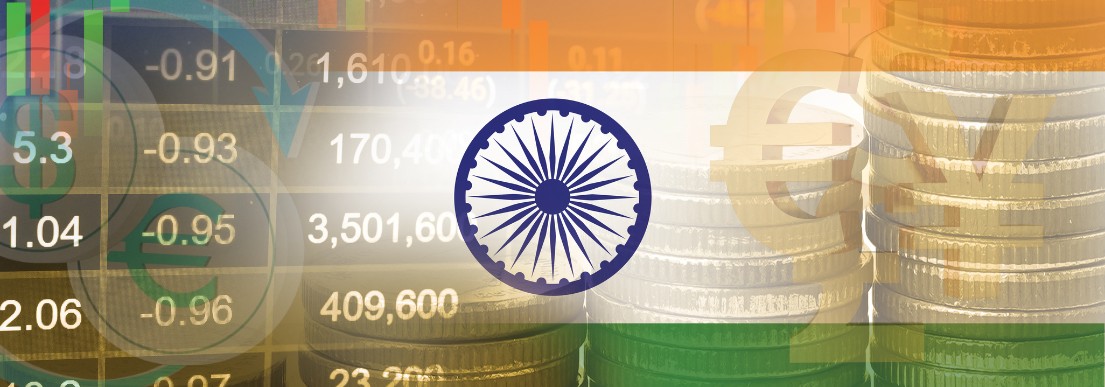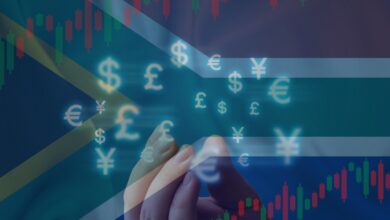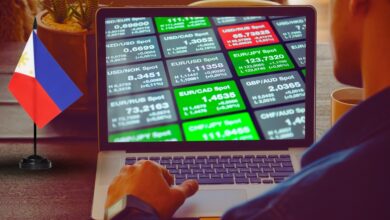Things to know before adjusting to India’s fluctuating forex market

Foreign Exchange Market, or the Forex market, is a globally centralized or retail market involved in trading currencies. This market decides the exchange rates for currencies of all types. Purchasing, selling off, and trading currencies based on existing or previously decided prices are all-inclusive. In short, the Forex market involves the action of purchasing, selling, and exchanging currencies in such a way that the trader makes a profit out of the variation in the exchange rates of the currencies under the transaction.
The Forex market in India has encountered continuous growth with an average everyday capacity close to USD 33 billion. India’s present scenario of Forex reserves traversed the USD 600 billion niche for its maiden time in June 2021. Though it had reached a pinnacle of USD 642.453 billion on September 8 of the same year, the reserves declined to USD 573.727 billion on the weekend of January 20, 2023. However, it was USD 572 billion a week before.
Factors that Impact India’s, Forex Market
Factors influencing India’s Forex market must be considered while plunging into Forex marketing. This section discusses the key economic, political, social, and cultural factors affecting India’s forex market.
The economic factors affecting India’s Forex Market can be broadly classified into macroeconomic and microeconomic factors. The macroeconomic factors include inflation, unemployment, GDP, and so on…, while the study involving the discrete representatives like the businesses and consumers and their decision-making on economic grounds fall under microeconomic factors affecting India’s forex market.
Numerous other economic factors are to be considered while the anticipated future of any business or stakes portfolio is being decided. For any business, the primary economic factors that affect it include labor costs, interest rates, policies by the government, the GDP (Gross Domestic Product), taxes involved, and related management. The factors listed include the employment/unemployment level, GDP, position of balance payments, and prices (in other words, deflation or inflation).
Political factors also equally impact India’s forex market. In general, a nation with a stable government attracts numerous foreign investments that shoots up the foreign capital in the country, resulting in a marked increase in the value of the domestic currency. However, the political state of a country is said to be stable when it is void of violence or terrorism, protests, social crises, uproars among common folks, agitations among various clans, and an untold sense of dissatisfaction among the people of all levels. When a nation encounters these strifes, there is a steep depreciation in exchange rates. The government turns unstable, expecting to be overthrown by those who elected them or by them they were appointed to hold offices.
Contemplating the social and cultural factors affecting India’s forex market, lack of education is a lingering social factor that greatly impacts forex trading. With a steep increase in children forced not to study or having been denied basic education for various reasons, unemployment increases. Subsequently, the common folks are forced not to spend much money, which impacts forex trading. Women not being permitted to socialize themselves, pursue higher education, and become professionals is an added social factor affecting the forex market in India.
On the other hand, some cultural factors impacting the Indian forex market are the strict adherence to superstitious beliefs and the custom of clinging on to living as joint families. Certain superstitious beliefs prohibit cash transactions on particular days and time slots. This affects trading on such specific days and times. Also, dwelling as a joint family brings more economic burden to the family’s sole breadwinner as he isn’t in a state to spend cash on investments or other trading activities.
Changes Pertaining to Regulations in India
The extension in the boundary of inclusive products has improved the flexibility in regulations along with the depth and ease of cash at hand, in financial markets. Significantly, this assists in structured fencing of the risks accompanying it. Numerous concerns journey along with the new products if they are permitted, like, the need arising for a wider knowledge of the product, the ability to tag its price on his own, prospective clients who could purchase them, and the extent to which the product would benefit the clients.
However, this expansion in the inclusion of new products can get truncated due to the unavailability of a considerable number of producers who could offer them. Subsequently, the intention behind customers to get benefitted from this regulation remains unfulfilled.
Yet another change in the regulatory framework is the door being open to non-residents as well, that they may reach the domestic forex market to fence their risks too. It also permits them to reach the market without the necessity for fundamental exposures, when it comes to non-deliverable derivatives. This has impacted a marked leap in the number of domestic entities involved in the forex market, which in turn is likely to expand in the days ahead.
Pondering over the upcoming regulatory changes that might impact India’s forex market, the most significant evolution in the governing framework of forex market management is its transition to a principle-oriented framework, from its previous rule-oriented, prescriptive structure. Having distributed most of the procedural consents by adopting this framework, it has remarkably increased the comfortability in performing business by decreasing the pressure on consents, in addition to the related transaction charges.
However, specific directives are to be adhered to, which impacts even the top forex brokers in India. A few to mention are, the compulsion on forex brokers, including the top forex brokers in India to come up with their consent for the change, the belief that is to be developed on the forex brokers by the regulator, and the liability upon the forex brokers who will be vested with greater margins of responsibility. Evidently, this framework transition demands a considerably higher range of responsibilities to be shouldered by the Indian traders involved.
Impact of Technological Advancements in the Indian Forex Market
Moving further, this section focuses on the technological advancements employed in the Indian forex market and how the modernization in technology impacts the actions of assigning liquidity and discovering prices in forex markets, along with their related implications.
As a known fact, since the inception of forex marketing, which commenced years back, the correspondence between those involved in the forex market has been through telephonic voice calls or through forex brokers who operated as mediators. However, numerous electronics-based trading trends have surfaced within the past twenty years, including exchange locations and electronics-based trading means. OTC (Order To Cash) based forex trading is carried over in these locations, yielding maximized electronification in the forex trading domain.
However, the last decade has witnessed certain fresh versions of exchange locations like the Single-Bank Platforms (SBPs). These locations are different from the conventional multi-bank platforms (MBPs) in which the one performing various operations is identically not conversant with banking technology. Universally speaking, SBPs are primarily identified as “dark pools” because the details regarding price and trading aren’t distributed here, as against the MBPs. The advancement also leads to the dissemination of worldwide forex liquidity over a widespread business front. Of late, SPBs are turning prominent in the Indian Forex market as well, with the magnitude of business transactions steeply shooting up in such locations.
Though it is overwhelming to observe the rising range of Forex market transactions being carried out electronically, the grievous side is the increasing extent of the ambiguity concerned with pricing procedures. Consistent endeavors to ensure clarity while the products are being tagged with their price are the need of the hour.
When it comes to MSME (Ministry of Micro, Small and Medium Enterprises), though they have emerged to stand as the significant donor to the blooming forex market in India, they usually get caught up between the intricacy and specializations of the forex market, which tends to sound much technical to them.
Additionally, they aren’t reachable to live updates on forex rates, forcing them to rely on banks’ updates, who attempt to use this opportunity to quote forex rates higher or lower than the live forex rates. The banks also accumulate other charges, such as commission charges for bank operations or forex transaction-related charges. The challenges arising from the incorporation of new technologies need to be addressed by concerned boards.
Market Volatility and Managing Risks
By the term “volatility” in the forex market realm, we mean the fluctuations in the price of currency from its average value. When the fluctuations vary wildly, we say there is huge volatility; when it’s comparatively lesser, we state the volatility as low. In other words, it refers to the rapid and recurring variations in the exchange rates at the forex market. To be crisp, volatility is a measure of standard deviation. It is characterized by difficulty in identifying and tracking, as it is unpredictable by nature. When we claim the volatility to be more, the risks in trading are greater. Thus, trading risks encountered are directly proportional to the volatility.
It is essential that the risks associated with forex trading are to be mitigated to be utmostly benefitted. By “risk mitigation” in forex trading, we mean the steps taken to minimize any negative impact that might affect forex trading. Therefore, an efficient methodology for planning and implementing the chosen strategy is mandatory for effective risk management. A few of the strategies to mitigate risks are as jotted below:
- Get to know the forex market – Ensure the nature of the forex market before getting involved in it. They might fall under the spot, forward, or futures markets.
- A thorough hands-on experience in carrying out the trade by borrowing funds to acquire assets with the perception of forecasting capital gain increase is required.
- Spend solid time building up an effective trading plan which must bring forth your originality without being stolen from someone else. The reason behind the requirement to be original is that each person who has come up with a trading plan has their own dreams, visions, and futuristic ideas.
- Fix a ratio between risk and reward so that your profits might exceed the losses incurred.
- Ensure the usage of stops and limits, as deciding on the commencement and exit junctures before a position is made open is mandatory.
- Ensure your emotions are under control. All emotions, including fear, temptation, doubt, or anxiety, that are expressed matter.
- Also choosing the right forex signals providers can help you make the right decisions
- You must keep yourself updated on the current affairs regarding bank announcements, politically related news, and circulars or amendments from central banks.
- Kick-off with a demo account before you actually get into forex trading. This provides a satisfactory level of comfortability, as you will be well-versed in the functioning of forex trading, and to top it all, no real money would be lost.
Choice of the Apt Trading Strategy
It is an evident fact that Indian traders or anybody else involved in Forex trading are expected to have imbibed the necessary knowledge along with relevant experience in order to accomplish the trade successfully. Here are a handful of commonly applied proven Forex trading strategies that have been employed successfully in India.
- Forex Scalping – Smaller market movements gain focus in this strategy. It uses the tactic of being involved in numerous trades aiming to bring in smaller gains in each of them. You can’t remain in this strategy for too long, and it demands sharp, careful attention to analyze the charts to discover new trading chances. It is this strategy that most Indian traders are comfortable with.
- Trend Trading – Here, it is the involved Indian traders who ought to point out the flow of price currency and make their decision on their entry point based on the same. To assist with this inspection, various tools like speculative, comparable strength indicators and so on.. exist.
- Counter Trend Trading – When Indian traders incorporate this strategy, they are supposed to carry out trades in opposition to the contemporary market trend. Based on the forecast that the trend might take a reverse path, this strategy is carried out with the sole goal of acquiring little profits.
- Range Trading – Trades here are accomplished within a certain span of price. It is the duty of the trader to find out the price span for trading pleasing to him and the price levels in general are reliant on the demand of currencies and their suppliers as well.
- Breakout Trading – This trading strategy is obvious from its very name. The trader ought to step into the market at the very instance when the market emerges from a prior trading span, which is what is called the breakout point.
Before one begins to pick up any of the above-discussed trading strategies, it is essential to have an idea of the factors to be considered, in order to make the choice a successful and profitable one. The three main factors to be considered are as discussed below:
- Time duration – Picking the time duration to fit the trading manner is quite a significant one. Indeed there exists a vast difference between a trader who trades on a time chart for 15 minutes and a weekly one. While one is inclined on turning to be a scalper (a trader who focuses on being benefited from smaller moves in the market), he must pick strategies that let him focus on shorter time frames like 1-minute to 15-minute charts. Parallely, swing traders choose to hold on to the 4hr chart or daily chart in order to acquire trading options that bring in more profit. Therefore the bottom line is to pick the trading strategy that answers your question, “What is the duration for which I’ll be trading?”
- Count of trading opportunities – The answer to your question, “What is the frequency at which I wish to open positions?” is the next area of concern in choosing the suitable strategy. While obliged with opening numerous positions, one can choose to scalp. Parallely, Indian traders inclined to spend moments on analyzing reports find it tough to look through charts and hence scalping wouldn’t be apt to them, hence they might choose from the rest.
- Size of position – Perceiving the right side of the trade is of prime significance. Triumphant trading strategies expect traders to have knowledge about the associated risks. Encountering more risk pushes traders into huge losses.
Concluding Thoughts
On a closing note, the Forex market is different, demanding previous experience and thorough knowledge to carry it out successfully. It is equally important to be aware of the accompanied risks, the ways to mitigate them, and the rewards that cling to them. The possibilities of making profits and incurring losses are higher here because it is an intensely liquid market.
However, it is advisable to get better counseled by authentically certified investment advisors who could provide suggestions based on in-depth research. Making the right choice of trading strategy and being equally aware of the updated regulations from the centralized banks are added advantages, which eventually take Indian forex traders to reach the culmination in the forex domain in India.



